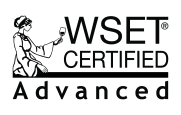By Peter Vetsch
Sicily update: the streak is over! Ask and ye shall receive. After a rather bizarre run of three straight bottles in this dozen from Italy’s most prolific wine island, our request to the cosmos for variety has been granted with fervour, as we are off to the German-est (and thus potentially the best) part of France, Alsace…where, incidentally, my Vetsch family ancestors apparently hailed from five or six or seven generations ago. Maybe that’s why I love Riesling so much. Alsace is something of a mystery to me from a vinous perspective, because despite producing solidly priced and consistently high-quality wines, and despite being one of the few Old World locales to actually consider the casual-drinking consumer enough to place grape varietal names on their labels, the region is almost always a hard sell in our market. Perhaps adopting the white wine focus, gothic scripts and tall fluted bottles from its German forefathers was not the best marketing decision after all. But when the wine is in a test tube as opposed to a flute…now we’re talking.

The non-Sicilian wine in question is the 2016 Pierre Henri Ginglinger Riesling, yet another Vinebox offering about which Internet information is strangely nigh-unavailable. Maybe they are so eager to give you a surprise in the box that they have shut down all worldly sources of data about the bottlings they select. Maybe their chosen producers have to sign the mother of all NDAs. Either way, I speak of family estates and generational turnover with admiration quite a bit, but THIS…this is that on an absurd scale. The Ginglinger family first planted vines in 1610, and generation number TWELVE is currently at the controls of the estate. Come on. Their winery building looks like something out of Hansel and Gretel, nestled in the centre of the medieval town of Eguisheim, which is closer to Freiburg in Germany than the Alsatian hub of Strasbourg and is the birthplace of wine in Alsace; the winery’s appearance may have something to do with the fact that it was built in 1684, trivia so good that it makes an appearance on not only Ginglinger’s bottles, but even its Vinebox vial:

The family has committed to organic and biodynamic farming methods, and since 2001 its 15 hectares of vineyards, spread across three villages, have been herbicide-free and devoted to maintaining life and vibrancy in their soils. The estate is white-focused, with its plots planted to an array of Alsace’s finest exemplars: Riesling, Muscat, Pinot Blanc, Pinot Gris, Sylvaner and Gewürztraminer. Part of the 15 owned hectares are in the Grand Cru vineyard of Eichberg, but from what I can tell this is a blended-vineyard effort as opposed to the family’s pinnacle GC Riesling.

The unassuming pale lemon colour of this wine belies a beguiling active nose, a pervasively floral mix of carnations and icing sugar, canned pear and lilacs and pink Freezies. While the aromas skew notably sweet and confectionary, something about them suggests to me that this sugar-laden impression will not necessarily transfer to the tastebuds, and they do indeed prove to be fleeting; the concept of “sweet” immediately disappears when the Riesling hits your lips, never to reappear. It is cheek-puckering and powdery acid-led from the first sip, arch to the point of being austere, its lemon pith and grapefruit flavours layered with chalk and wet stone and honey, if you first squeezed every single iota of sugar out of it. This gives you a playful caress and then slaps you, hard, in the face and tells you to get real. Wake-up call heeded.
89 points



Leave a comment